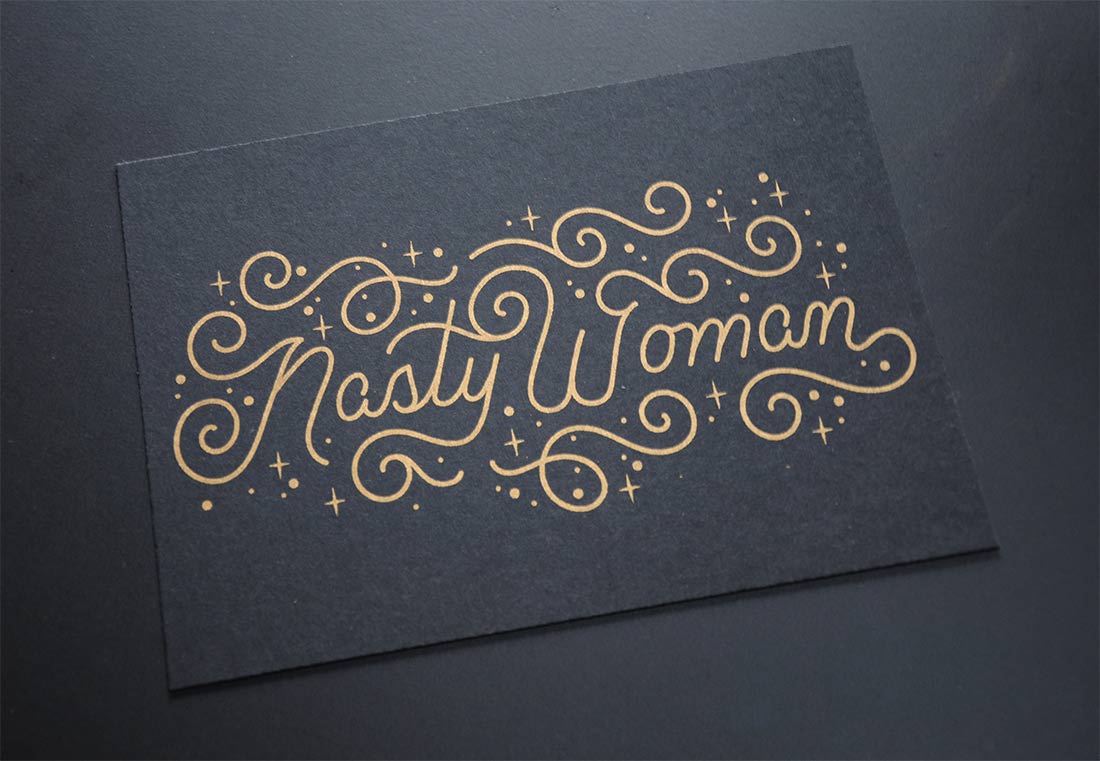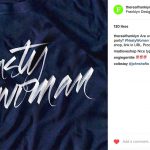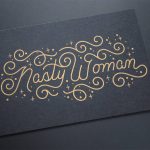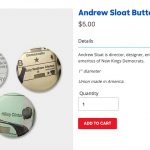by Christen Gall
“Get this, Donald. Nasty women are tough, nasty women are smart, and nasty women vote,” said Massachusetts senator Elizabeth Warren in a perfect blend of spunk and directness delivered in a shrill feminine voice. “And on November 8, we nasty women are going to march our nasty feet to cast our nasty votes to get you out of our lives forever.”
Warren’s rebuke came after Republican presidential nominee Donald Trump’s now infamous comment calling Hillary Clinton, “such a nasty woman” during the final presidential debate on Oct. 19.
“I had this dual reaction,” said New York City based graphic designer Elisa Maezono after hearing Trump’s comment. She called her response both, “deep horror” and a “gleeful cathartic moment.”
Maezono is one of many designers who have taken Trump’s sexist comment and turned it into a feminist battle cry and marketing phenomenon. Days after the debate, the internet was flooded with supportive Clinton rallying calls and paraphernalia, from social media hashtags to t-shirts and mugs. But beyond the ephemeral use of the internet to call out sexism, the products and memes point to the way in which the Clinton campaign and her supporters have decided to creatively promote their candidate and feminist causes through design.
Maezono, who works for Franklyn, a 10-person design studio with clients like Sotheby’s Gallery and Airbnb, created her own version of the nasty woman shirt in white, navy and black for $25. The proceeds go to Planned Parenthood.
The internal process of creating the shirt was seamless, according to Maezono. “All of these feelings I have been having for so long came together,” she said.
Even though she realized this is a fleeting moment, Maezono wanted to contribute the shirt as a way to fight the use of the gendered term.
Jenna Blazevich, a feminist artist, designer and owner of Vichcraft Studio in Chicago, also created a nasty woman shirt after the debate. It features a scripted font with swirled embellishment, surrounding the stark phrase. Blazevich designed the shirt after the initial wave of products came out.
“I didn’t see that anything was missing necessarily, but I still wanted to try my hand at working on a phrase, because it’s very much in line with the things that I’m already inclined to work on,” said Blazevich.
She posted it on Instagram, and it sold out twice. Blazevich also donated proceeds to Planned Parenthood.
“I’m not surprised that he feels comfortable calling her something like that,” said Blazevich, “knowing that he’s going to still, not only remain the realistic candidate for a large portion of our country, but that people will even like him more if he says something like that to Hillary Clinton. That part doesn’t surprise me.”
Blazevich used her design skills to support Clinton earlier this year by collaborating with a group of designers to create a set of buttons for Clinton’s 45-pin project, showing why 45 designers support Clinton. The pins, both 1-inch and 3-inches wide, were debuted during the Democratic National Convention over the summer.
“We’re trying to take the campaign button back because historically they have been sexist,” said Blazevich. “When they are featuring women, whether it’s a first lady or a women politician, generally if she’s featured on a button, it’s in a sexist and diminishing way.”
Blazevich chose to use three phrases — “Votes for Her,” “Deal Us In” and “Fighting for Me Since ‘73” — for her 1-inch buttons with a personal font from an older design campaign titled “Girls to the front.” She took the phrase “Girls to the front” from Kathleen Hanna, the Riot Grrrl leader considered to be part of the third wave of feminism, calling women to the front of punk rock shows in the 1990s.
“It seemed fitting,” said Blazevich. “That’s my own lettering style that I happen to use this, but then hadn’t used it for a client project or applied that same style to anything else, so it seemed like a good opportunity to try that out on something that’s also a feminist campaign button.”
Andrew Sloat, a political activist designer from Brooklyn, created another set of buttons for Clinton’s 45-pin project. Sloat’s buttons took a different approach than some of the other designs.
“If I want people to vote for Hillary, then why don’t I show them what it looks like every other time that I voted for Hillary,” said Sloat of his thought process behind the pin designs.
His pins replicated ballots from Clinton’s New York senate race, her first bid for the presidency in 2008 and her current ballot as the Democratic presidential nominee. Sloat is known for political activism projects, including videos shown during a Times Square Midnight Moment series in 2013 that visually presented phrases of the Constitution.
“We all really had to get to the core of our personal reasons for supporting Hillary were and express those as directly as possible,” said Sloat. “A political campaign button is a tiny, tiny surface that needs to speak loudly in order to be seen.”
Sloat, who works in local Democratic politics in Brooklyn said he admires Clinton because she understands that a career in politics is a long game.
“It’s a huge honor and delight to get the attention of a presidential candidate to do that work,” he said.






